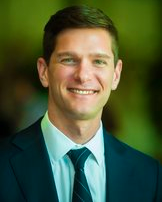Transforming Education—B(u)y the book! Lessons from Thoreau, Alcott, Gleason, and Lichtman11/27/2017  Peter Gow Peter Gow This fall we’ve encountered a several books that interrogate the ways in which we think about teaching and learning. Perhaps surprisingly, two of these focus on advanced educational thinking in the early 19th century, and those with a more contemporary focus take up similar themes in urging us to change the way we think about schools and education. HENRY DAVID THOREAU: A LIFE by Laura Dassow Walls (2017) presents the man who might claim to be one of the progenitors of “progressive” education as a fully engaged human being and active moral being—not just a hermitic naturalist who generated a whole lot of senior page quotes in high school yearbooks. Walls reminds us that field trips, hands-on work, and exhibitions of learning are not exactly “innovations”—arguably, Henry and his brother John invented the field trip as we know it. Walls’s presentation of Thoreau’s active role in the Abolition movement also reminds us that courageous and high-stakes resistance to oppressive government policy is nothing new—enforcement of the Fugitive Slave Law of 1850 saw armed Federal troops mustered to intimidate outraged citizens in Boston. RECORD OF A SCHOOL by Elizabeth Peabody (1835; paperback edition 2006) dates from a long time ago, but the challenges and conundrums that faced polymath and obsessive gadfly Bronson Alcott as he attempted to transform education at his short-lived Temple School in Boston seem as present to us in 2017 as they were to his insightful and intentionally contrarian self. The Temple School may not have lasted long, but its ideas have been motivating forward-thinking educators from his early disciple Henry David Thoreau down to this very day, and Alcott deserves to be remembered as the educational pioneer he was. AT WHAT COST? DEFENDING ADOLESCENT DEVELOPMENT IN FIERCELY COMPETITIVE SCHOOLS by David Gleason (2017) Gleason, a consulting psychologist and wide-ranging explorer of schools and student life, makes the neuroscientific as well as the moral and educational case for reframing school so that it is not a toxically, even fatally stressful environment for students. In the vein of the “Turning the Tide” report, Denise Pope et al.’s Challenge Success, and the films of Vicki Abeles—along with the ICG’s own Principles of Independent Curriculum—At What Cost? tells of trouble at the heart of some of the most “admired” aspects of contemporary education—in particular selective school and college admissions—and that more clinicians working with more individual kids is not the way to fix it. The root cause, says, Gleason, is that in our achievement-fixated culture we tend ignore the facts of adolescent brain and social development as we extol “successes” that gratify adult and institutional actors—especially parents and schools—at the cost of student well-being. MOVING THE ROCK: SEVEN LEVERS WE CAN PRESS TO TRANSFORM EDUCATION by Grant Lichtman (2017) picks up where his ground-breaking previous work, #EdJourneys (2014), left off. Grant will be familiar to most readers of the ICG newsletter as a shrewd and compelling advocate for new approaches not just to curriculum and assessment but to the entire enterprise of school. A pragmatist and a keen observer, Grant presents in Moving the Rock a strong case for harnessing current technologies, accepted best practices, trends, and even anxieties to create a climate in which more student-centered learning and more flexible, democratic schools become universal desiderata instead of “progressive” or “alternative” oddities accessible and interesting to only a relative few. Grant knows schools inside and out, and his thesis is both provocative (in the best sense) and persuasive.
0 Comments
 Peter Gow Peter Gow How many of our schools lead with their college or next-school lists when they present themselves to the world? How many tout their students’ test scores and yield rates as evidence of the quality of the education they provide? And whom, exactly, does this kind of messaging serve? Once upon a time our forebears heated their homes with coal and wore clothing produced by child labor, and now we help children worry about whether they have enough activities or good enough grades or test scores to get into the college of their dreams—often equally or even more so the college of their families’ and their schools’ dreams and aspirations. If our students are laboring for sixty or so hours a week to gratify, glorify, and pacify the educational expectations and anxieties of others, how different is this from 60 hours a week “in the hole” or in the mills on behalf of the robber barons of yore? But this is the least of our worries. The mental health crisis that we are experiencing in high-pressure, competitive schools, independent or public, is driving more and more students to fear school and to take anti-social and even self-destructive measures to relieve their agonies. Ten years ago we heard relatively few reports of students taking time out of school for mental health-related reasons. Now I hear of few schools where this is not a frequent occurrence. Across the country we hear of student suicides related at least in part to academic stress and anxiety. Over the past few months I’ve used this space to share my own anxieties about the future of the world and the future of education. I may sound a bit shrill, but I’m scared for all kids. It’s bad enough that existential threats to democracy, to humanity, and to life on the planet itself seem to be multiplying, providing a backdrop that now rivals or surpasses the fears of my adolescent self in the most nuclear-fraught years (atmospheric tests, Cuba; duck-and-cover) of the Cold War. But add to this a toxic cultural cocktail of apathy, hysteria, overt bigotry, selfish greed, mistrust, and astounding economic disparities, and you have a tough world in which to be any age, much less young. And a tough world in which to be an educator. If it’s not about distractions, it’s about deprivations or fears, and amidst it all we’re asked to be experts in curriculum design, in assessment, and in the neuro-developmental characteristics of children. We must teach with justice and global awareness as we leverage an ever-evolving array of tech tools and new practices. We understand the imperatives, and we work our tails off to rise to every occasion, and yet at the same time we are sometimes forced to wonder if we are complicit in maintaining a harmful system. It’s not just about class and race and privilege, though these things play an enormous role in the crisis. If college admission pressure, for example, might look like a “First World problem,” at least in the media and on the cocktail party circuit, we cannot ignore the differential experiences of all groups, privileged and not, in their deep concerns around educational access and quality. We can try to create mini-utopias on our campuses, where lofty values and multicultural harmony prevail (at least on the surface) or at least outweigh a baser ethos within whatever spatial, temporal, and even digital boundaries we may establish, but when our students experience and act in the world, there is no zone of proximate morality to buffer them from injustice, inequity, and hatred—or violence. Last month I mused on the idea of a Grand Unified Theory of education that would bring together the essences—and urgencies—of current thinking and practice around social justice, mindfulness, anti-racism, student mental health, independent curriculum, and educational access and equity. There are plenty of people and organizations working on these things piecemeal and plenty of schools that are up to their eyeballs in multiple facets of this great, convoluted conceptual mass. But we need to figure out a way to bring together the best minds and most passionate spirits in the service of concerted, connected action. Progress in this area is not just important, it’s a moral imperative. Who ought to be in the room for this? I’ve got my list, but who’s on yours? How do we make this happen? Transforming Education—B(u)y the book! Lessons from Thoreau, Alcott, Gleason, and Lichtman11/27/2017  peter gow peter gow This fall we’ve encountered a several books that interrogate the ways in which we think about teaching and learning. Perhaps surprisingly, two of these focus on advanced educational thinking in the early 19th century, and those with a more contemporary focus take up similar themes in urging us to change the way we think about schools and education. HENRY DAVID THOREAU: A LIFE by Laura Dassow Walls (2017) presents the man who might claim to be one of the progenitors of “progressive” education as a fully engaged human being and active moral being—not just a hermitic naturalist who generated a whole lot of senior page quotes in high school yearbooks. Walls reminds us that field trips, hands-on work, and exhibitions of learning are not exactly “innovations”—arguably, Henry and his brother John invented the field trip as we know it. Walls’s presentation of Thoreau’s active role in the Abolition movement also reminds us that courageous and high-stakes resistance to oppressive government policy is nothing new—enforcement of the Fugitive Slave Law of 1850 saw armed Federal troops mustered to intimidate outraged citizens in Boston. RECORD OF A SCHOOL by Elizabeth Peabody (1835; paperback edition 2006) dates from a long time ago, but the challenges and conundrums that faced polymath and obsessive gadfly Bronson Alcott as he attempted to transform education at his short-lived Temple School in Boston seem as present to us in 2017 as they were to his insightful and intentionally contrarian self. The Temple School may not have lasted long, but its ideas have been motivating forward-thinking educators from his early disciple Henry David Thoreau down to this very day, and Alcott deserves to be remembered as the educational pioneer he was. AT WHAT COST? DEFENDING ADOLESCENT DEVELOPMENT IN FIERCELY COMPETITIVE SCHOOLS by David Gleason (2017). Gleason, a consulting psychologist and wide-ranging explorer of schools and student life, makes the neuroscientific as well as the moral and educational case for reframing school so that it is not a toxically, even fatally stressful environment for students. In the vein of the “Turning the Tide” report, Denise Pope et al.’s Challenge Success, and the films of Vicki Abeles—along with the ICG’s own Principles of Independent Curriculum—At What Cost? tells of trouble at the heart of some of the most “admired” aspects of contemporary education—in particular selective school and college admissions—and that more clinicians working with more individual kids is not the way to fix it. The root cause, says, Gleason, is that in our achievement-fixated culture we tend ignore the facts of adolescent brain and social development as we extol “successes” that gratify adult and institutional actors—especially parents and schools—at the cost of student well-being. MOVING THE ROCK: SEVEN LEVERS WE CAN PRESS TO TRANSFORM EDUCATION by Grant Lichtman (2017) picks up where his ground-breaking previous work, #EdJourneys (2014), left off. Grant will be familiar to most readers of the ICG newsletter as a shrewd and compelling advocate for new approaches not just to curriculum and assessment but to the entire enterprise of school. A pragmatist and a keen observer, Grant presents in Moving the Rock a strong case for harnessing current technologies, accepted best practices, trends, and even anxieties to create a climate in which more student-centered learning and more flexible, democratic schools become universal desiderata instead of “progressive” or “alternative” oddities accessible and interesting to only a relative few. Grant knows schools inside and out, and his thesis is both provocative (in the best sense) and persuasive.  Corinne Dedini Corinne Dedini Students can and should construct knowledge in school. No educator would dispute this, and many can even produce evidence that it is actually happening. But for nearly two centuries, the construction of knowledge has been driven by everyone in school except the students -- from school districts to teachers; textbook publishers to standardized test companies; curriculum consultants to college admissions officers. Independent schools claim indemnity by virtue of our small class sizes, teachers who really know our students, and social-emotional co-curricular programming. But parents want 4.0 transcripts, internships on resumes, and ultimately college acceptances, so we’re still beholden to external metrics, regardless of how misaligned they are to our school’s mission. And therein lies a slippery slope: if we take our eyes off of our mission, we will lose enrollment traction and, ultimately, market share. This is where Dewey comes in. Look up every independent school you love -- you work at one, send your children to two others, have a dream school where you hope to work someday -- and you’ll find elements of Dewey embedded in the mission and sprinkled across every page of the website. But sit in on the monthly Parents’ Coffee or visit a few classes and Dewey is notably absent. Because Dewey isn’t paying the bills. But if you’ll stay with me, I’ll do my best to convince that he can. We have spent the last two decades moving from teacher-driven to student-centered pedagogical approaches. In this time (the exact amount of time that I have been teaching in independent schools), we have trained teachers in inquiry-driven learning, station rotation models, Montessori principles, the Harkness Method, formative assessment, flipped classroom, project-based learning, block scheduling, experiential education, brain-based learning, gender differences in the classroom, differentiated instruction, social-emotional learning, the Whole Child approach, blended learning.... Exhausted yet? Me too. That’s why I left the classroom to learn and teach about personalized learning. And here’s the thing: there’s not much new in personalized learning, so don’t make the mistake of writing it off as another pedagogical fad. Personalized learning done well is Dewey’s dream come true -- it empowers learning through student agency, redefines the essential role of the teacher in the process, and raises up ethical, capable learners. As a classroom teacher, summer after summer of professional development gave me an overflowing toolbox but no blueprint. I would read Dewey over and over in an attempt to see my new pedagogical tool as the catalyst to a learner-driven pedagogy but the activation energy was never enough (not every student learns well around a Harkness table) or there were still missing tools (letting students choose what they want to learn leaves them grossly underprepared). Until now. Personalized learning is the disruptive innovation whose time has come. It works by simply -- and I do mean that it is not hard because teachers already have so many tools -- giving the teacher the framework she needs to (1) develop a learning experience custom designed for each student, and (2) ensure that learning really is happening. Whether the teacher is a tech early adopter or a Luddite, in the personalized classroom instruction is flexible, students have pathway choices that increase efficiency and effectiveness, data gives teachers insight into the learner experience, and ongoing student reflection and self-evaluation promote ownership. Dewey would like this because he believed that a teacher’s job is to cultivate an environment for autonomy, inquiry, and curiosity; and he wanted our educational system to produce responsible citizens. Independent schools have done this all along, but we’ve done it by asking more and more of our teachers. Giving teachers the chassis to personalize their pedagogy brings Dewey back to life, and everyone -- from Dewey, to students, teachers, and parents -- is over the moon when students are motivated to learn and can demonstrate measurable progress in school. I think that might just be what school is supposed to be about.  Brad Rathgeber Brad Rathgeber This school year, 129 independent schools from around the world are enrolling students in courses at One Schoolhouse. And, every one of them seems to handle somewhat differently the question of whether to pay for student enrollment in online courses or pass on some of all of the costs to the families of students. In working with schools on this question, I’ve learned that there are three primary lenses to consider: mission, strategy, and priorities. Start with Mission Every great independent school is guided by its mission. Decisions about online learning should be no different. Over the last ten years, many independent schools have added to their mission statements language about preparing students for a globally connected world. In turn, they have created exceptional programs abroad and in their own communities to expand students’ worldviews and deepen communication skills and empathy. But, students do not need to leave campus to connect meaningfully with those outside their community. Some independent schools have followed the path of higher education, and used online learning to expand opportunities for global connectedness -- meeting this new mission directive in part through programs that can be done anywhere. Consider Your Strategy We know that potential independent school parents will not visit or apply to schools if they don’t offer the courses or programs desired. That’s a challenge for any independent school in an age of increased demand for customization and thinner resources. For many schools, this is where online learning can fill in the gap between what is offered on campus and what is not. At some schools, this means offering a language online or quickly increasing computer science opportunities. By offering the opportunity online, the school can strategically add programs or courses to enhance value or meet market demand by expanding opportunities on a per student basis, rather than a per employee basis (for example, $1500 per student/per course versus $60,000-$80,000 per employee/per program). This mitigates the risk that the school takes on for program expansion. Question the Priorities At the average independent day school, 60-70% of expenses are directed towards employee costs. That fact is a testament to the values that we hold: relationships between students and teachers matter greatly and students should have expansive opportunities. And, at the same time, schools can find that they are spending significant resources on opportunities for a limited number of students. For example, an upper level math course like Multivariable Calculus might have only three or four students, but be taught by an experienced faculty member. Schools might question whether that is the best use of limited school resources, or whether the school is better served by redirecting the experienced faculty member to a standard, full section of math. In that case, a school may decide to move the course instruction online, and thus pay for what would be the next course in a math progression for high achieving students. -- If we use these lenses to decide how we should handle payment for online courses, we consider how online courses and programs enhance the work that we do on campus, rather than compete against that work or simply add to our costs. |
Don't miss our weekly blog posts by joining our newsletter mailing list below:AuthorsBrad Rathgeber (he/him/his) Archives
July 2024
Categories |

 RSS Feed
RSS Feed